Since 1900, electric cars have occupied the market of private cars in the United States, and people think about how to have a good electric car. ——Dr. H. Wakefield, an expert on the history of electric vehicles in the United States
Compared with the old capitalist countries in Europe, the electric vehicle research in the United States started late, but its development is fast. During this period, many electric vehicle inventors, manufacturing companies and operating companies emerged in the United States, such as Rick, Woods, Pope, Morris and Salom, as well as Baker Locomotive Company and Detroit Electric Company. company of. By the end of the 19th century, the scale of the commercialization of electric vehicles in the United States had far exceeded that of Britain, France, and Germany.
Rick, who performed brilliantly at the Providence Auto Race, was also the first person to assemble an electric vehicle in the United States. He recognized and began to practice the lightweighting of electric vehicles early on. In 1890, he imported a tricycle from England and installed a self-made electric motor on it. Although the power of this electric motor is only 120 watts, because the whole body is very light, only 68 kg, the speed can reach 13 thousand per hour. rice. The car is equipped with a battery that lasts four hours and has a driving range of up to 48 kilometers.
Rick is not only a brilliant inventor, but also a shrewd entrepreneur. In 1889, he established the Rick Electric Motor Company, which successively launched a series of electric vehicles such as two-seater light vehicles, light vehicles for doctors, and delivery vehicles. At the end of 1897, Rick designed and completed the Victorian car, which had a total weight of 771 kg and was equipped with 40 batteries weighing 363 kg to drive a 1.5 kW electric motor. Based on electricity prices at the time, it was only 1.7 cents a mile to drive in New York City. In 1899, the Rick Electric Motor Company launched a small electric touring car called the electric brougham. The car has a total weight of 1905 kg and is driven by dual electric motors. It uses hard rubber tires and wide-spoke wheels. The Brougham car complies with people's pursuit of luxury and business needs, and is the originator of the modern personal closed car.
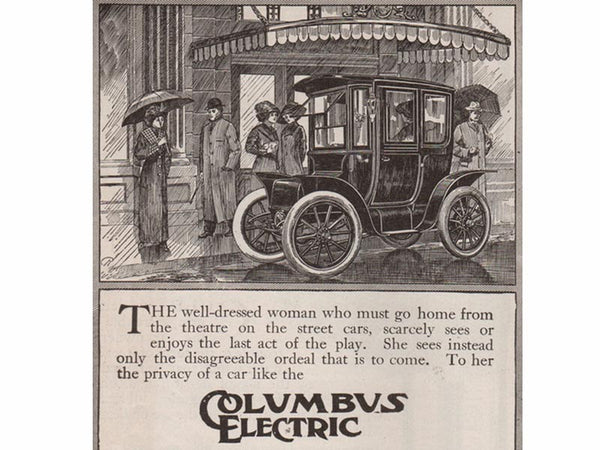
An advertisement for Rick Electric Vehicles
Although Rick established an electric car company, its products are basically customized for personal use and friends, and have not been mass-produced. In the United States, Morris and Salom are the ones who really put electric vehicles into commercial operation. In 1894, the two teamed up to form the Morris & Salom Electric Bus and Wagon Company, which introduced the electric transporter. The car was transformed from a small truck at that time, with large rear wheels and small front wheels, with a total weight of 928 kg. The power source used is composed of 60 acid batteries with a total weight of 726 kg, with a total capacity of 100 amps. 3 horsepower electric motor, the power can reach 9 horsepower in a short time, and the speed of the vehicle is controlled by voltage. At the end of 1895, the company introduced the Crawford electric pickup truck. The car is equipped with two small electric motors to achieve different speeds of the left and right wheels, solving the steering problem. At the same time, using wheels of the same size, the design began to consider the problem of uniform vehicle load distribution.
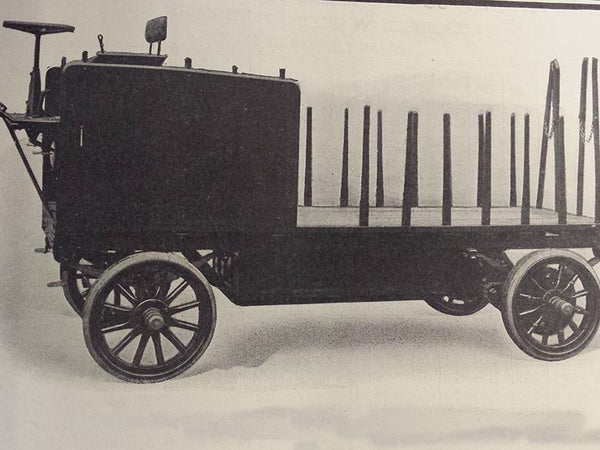
Morris & Salom Electric Bus & Truck Company's transporter
Morris and Salom not only have extraordinary technical talent, but also have forward-thinking business acumen. They believe that personal transportation needs can be met in the form of taxi fleets without requiring users to each own an electric car. This mode of transportation can avoid the problems of high cost and high consumption caused by personal purchases as much as possible. At the end of 1896, Morris and Salom created the first electric vehicle taxi fleet in New York City, consisting of 12 Hansen cars and a two-seater four-wheeler, pioneering the commercial operation of electric vehicles in the United States. 's precedent. A hundred years ago, Morris and Salom proposed this kind of transportation mode that makes full use of resources. Today, it is still worthy of our reference and reference when we need to vigorously implement energy conservation and emission reduction.
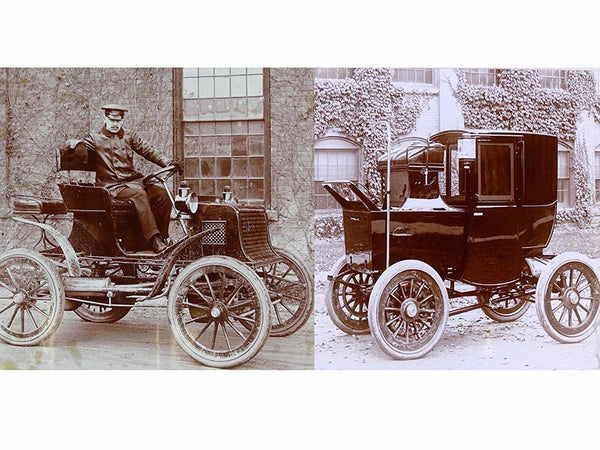
Two-seater four-wheeler and electric Hansen
The American Electric Vehicle Company was one of the most important electric vehicle manufacturing companies in the United States at that time, mainly providing electric vehicles for electric taxi companies, and produced a total of about 2,000 electric taxis. Most of the company's electric vehicles feature wooden spoked wheels, a symbol of this era's electric vehicles. Woods, who was running the American electric vehicle company at the time, was not only a successful entrepreneur, but also a brilliant engineer. In 1899, the first car purchased by the U.S. Department of War Readiness was from Woods. The Ministry of War readiness commented on this vehicle: "This is an ordinary carriage, the difference is that it can be powered by the power supply on the vehicle, used in the field for telegraphy, telephone calls and lighting, and can also be driven when necessary. The vehicle itself." The military vehicle designed by Woods can be said to be a "livestock-electric hybrid vehicle". In 1900, Woods published the world's first professional book on electric vehicles, Electric Vehicles: Manufacturing, Maintenance, and Operation, and even today, more than 100 years later, this book still has its modern reference value.
In 1898, Baker founded the Baker Locomotive Company in Ohio to manufacture electric vehicles. The company's first car was a two-seater light vehicle developed in collaboration with Edison, with bevel gears replacing the chain drive, and a nickel-iron battery invented by Edison, priced at $850. In 1902, a torpedo-style racing car was introduced, and the shadow of this shape can still be seen on the current racing car.
It is worth mentioning that the first electric car used by the White House was produced by the Baker Locomotive Company. Before Taft became president of the United States in 1909, the White House used horse-drawn carriages. In 1912, the White House allocated $12,000 to buy a steam car, two internal combustion engine cars and an electric car from the Baker Locomotive Company. The electric car worked until the Wilson administration.
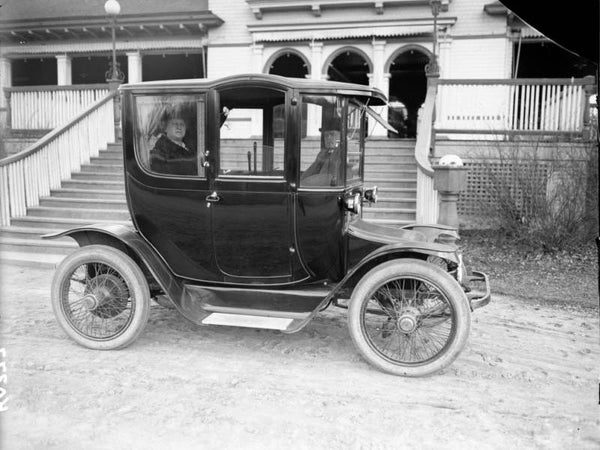
The first electric car used by the White House
By 1906, the Baker Locomotive Company had produced 800 electric cars, making it the largest electric car manufacturer in the world at the time. In 1907, the company already had 17 electric vehicles, the smallest being the Runabout, produced in 1904, and the largest being the Inside Drive Coupe, a two-seater four-wheeled sedan.
The Baker Locomotive Company was the leader in the electric vehicle market in the U.S. until 1914, but the Detroit company took over. In 1907, the Detroit Electric Company was formally established. In 1908, the "Standard" brand electric car was launched, which became the standard image of electric cars in people's minds at that time. In 1916, the Detroit company introduced an electric car that could be driven in the front and rear. The car has a top speed of 32 kilometers per hour and a driving range of 113 kilometers.
The ease of starting and low noise of electric vehicles make them popular with doctors and women. The Detroit company has seized this kind of psychology and launched a series of electric cars for women and an electric car for doctors, which is also the world's first electric ambulance.
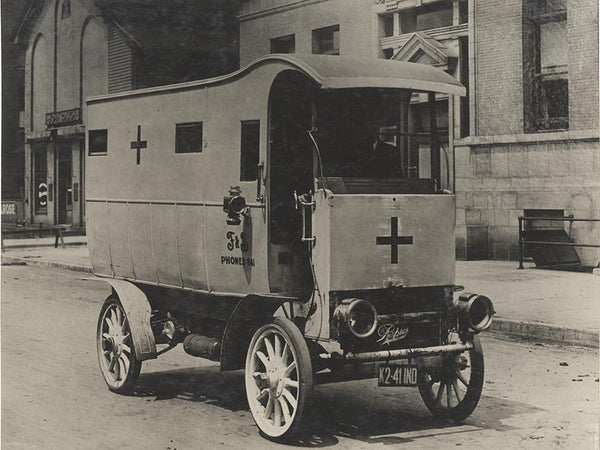
The world's first electric ambulance
In addition, the electric vehicles produced by Detroit Electric Company were also favored by the upper class at that time. Among them, Henry Ford, the founder of Ford Company, loved the company's electric vehicles very much and purchased 4 electric vehicles successively. One of Edison's cars was also produced by Detroit Electric.
1912 was the heyday of electric vehicle manufacturing in the United States, and the design of electric vehicles continued to mature. Among the electric vehicles launched in the same year, the "Century" brand has the most outstanding design. Its characteristics are: the method of using resistance to control the speed of the vehicle, the motor and the differential are directly connected, and the mass distribution of the whole vehicle is more reasonable.

1912 "Century" electric car
In 1912, Waverly introduced a Type 90 electric sports car with a roofed two-seater convertible. It has a low body, two seats are spring-loaded, and there is an additional active seat. The car has a foldable roof, a flat glass front windshield with push-open glass slats, and button curtains for the side windows. Waverly has conducted durability tests of 1,400 miles in 124 hours on poor suburban roads.
The Buffalo 29 convertible electric vehicle from Buffalo Electric Vehicles of Buffalo, N.Y., is popular with drivers who like to "drive fast" because it has better speed performance than the Wafer 90. The car was available with both wide-spoked and wire-spoked wheels, and could reach speeds of up to 35 mph, which was very fast at the time.
Between 1910 and 1920, U.S. electric vehicle production peaked, especially on the eve of World War I, with annual sales exceeding 1,000. In 1912, about 30,000 electric cars shuttled on the roads of the United States, and electric cars were very popular.